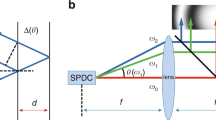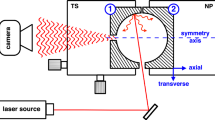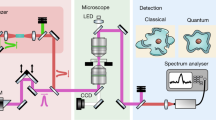Abstract
MANY roads to progress in physical investigation are brought to an abrupt end through the lack of measuring instruments of sufficient sensitiveness. In the attempt to bridge over one of these disabling chasms the writer was led to the following device, which appears capable of some development. The principle can be illustrated with reference to a particular case. Suppose we have a Boys's radio-micrometer, which we will call the secondary instrument. If we project on to the vane of this an image of a Nernst lamp filament the beam of light from the mirror of the instrument may be deflected through one thousand scale divisions. Suppose now that the image of the filament is 1 mm. wide, and that it is projected by the mirror of another radio-micrometer, which we may call the primary one.
This is a preview of subscription content, access via your institution
Access options
Subscribe to this journal
Receive 51 print issues and online access
$199.00 per year
only $3.90 per issue
Buy this article
- Purchase on Springer Link
- Instant access to full article PDF
Prices may be subject to local taxes which are calculated during checkout
Similar content being viewed by others
Author information
Authors and Affiliations
Rights and permissions
About this article
Cite this article
SHAKESPEAR, G. The Microtropometer. Nature 91, 450–451 (1913). https://doi.org/10.1038/091450b0
Issue Date:
DOI: https://doi.org/10.1038/091450b0
Comments
By submitting a comment you agree to abide by our Terms and Community Guidelines. If you find something abusive or that does not comply with our terms or guidelines please flag it as inappropriate.



